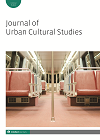
Full text loading...

This article makes a triple intervention into discussions about the relationship between subaltern collective memory, urban historiography and urban social movements. First, and more theoretically, I argue that grassroots urban social movements require a corresponding history to unite people into a collective urban social agent. In short, there are no urban social movements without a shared urban history to bring them together. The cultural struggle over defining a city’s urban meaning is waged not only by material political fights, but also over how we represent the past of our cities. Second, I argue that ruling urban classes circulate and popularize their own urban history in order to disrupt autonomous grassroots urban history formation. Third, and lastly, said historiographical struggle manifests itself in how we represent the pasts of Indigenous peoples in the cities of the Americas. I make this argument through a critical reading of Nona Fernández’s representation of the Indigenous past of Santiago de Chile in her 2002 novel Mapocho.

Article metrics loading...

Full text loading...
References


Publication Date:
https://doi.org/10.1386/jucs_00072_1 Published content will be available immediately after check-out or when it is released in case of a pre-order. Please make sure to be logged in to see all available purchase options.